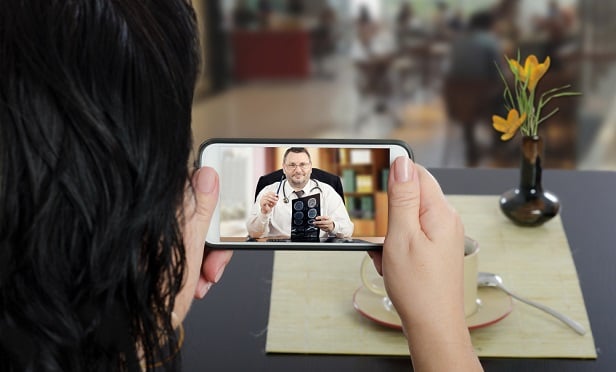 Prior to the arrival of the novel coronavirus in March, the total annual revenues of U.S. telehealth players were an estimated $3 billion. (Photo: Shutterstock)
Prior to the arrival of the novel coronavirus in March, the total annual revenues of U.S. telehealth players were an estimated $3 billion. (Photo: Shutterstock)
The COVID-19 pandemic has caused a massive acceleration in the use of telehealth services, with providers now seeing 50 to 175 times the number of patients virtually than they had before the public health crisis, according to a new report by McKinsey & Co.
The 10-page report found that up to $250 billion of the current U.S. health care spend could be virtualized, as providers have rapidly expanded telehealth offerings to meet increased demand to the pandemic.
Related: Telehealth providers struggling to meet demand amid coronavirus outbreak
Prior to the arrival of the novel coronavirus in March, the total annual revenues of U.S. telehealth players were an estimated $3 billion, with the largest vendors focused on providing instant, on-demand telehealth visits with physicians.
Since the pandemic, however, the industry has rapidly expanded virtual services, and McKinsey said that increased demand could result in up to $250 billion of the current U.S. health care spend could be virtualized.
According to the report, 76% of consumers said that they were now either moderately or highly interested in using telehealth, in contrast to just 11% of consumers who utilized telehealth in 2019. Regulators at the Centers for Medicare & Medicaid Services also have temporarily approved more than 80 new telehealth services and lifted restrictions in order to increase access to virtual care.
Seventy-four percent of telehealth users reported high levels of satisfaction, the report found, and providers likewise viewed the new landscape favorably. According to McKinsey, 57% had a higher opinion of telehealth since the pandemic, and 64% said they were more comfortable using it.
Still, actual usage of the services lagged behind consumer interest, as providers expressed concerns over security, workflow integration, the efficiency of telehealth compared to in-person visits, as well as the future for reimbursements.
"This shift is not inevitable," the report said. "It will require new ways of working for a broad set of providers, step-change improvements in information exchange, and broadening access and integration of technology."
Health care stakeholders, the report concluded, need to find new ways of working with a broad set of providers, better integrate technology and implement "step-change improvements" in information sharing.
The report outlines five changes that will be necessary before telehealth can realize its full potential. These changes include:
- Scaling the use of virtual urgent care
- Scaling the use of virtual office visits
- Integrating "near virtual" office visits into the care continuum
- Virtualizing home care services
- Tech-enabled home medication administration
"This value will not happen without concerted efforts by health care stakeholders, innovations in care models, adoption of new technologies, and supporting infrastructure," the report said.\
Read more:
- Why more employees are embracing telemedicine
- 6 tips for changing the telemedicine conversation
- Feds look to telehealth to rein in Covid-19 coronavirus
© Touchpoint Markets, All Rights Reserved. Request academic re-use from www.copyright.com. All other uses, submit a request to [email protected]. For more inforrmation visit Asset & Logo Licensing.






